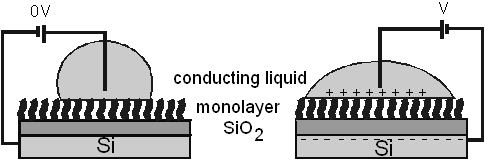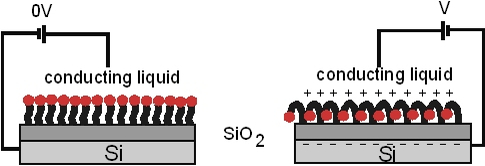Introduction
The objective of this project is to make electrically tunable surfaces in silicon microchannels for the control of fluid flow and catalysis. To accomplish this, self-assembled monolayers (SAMs) are used; SAMs form ultrathin, covalently bound, chemical interfaces of typically a few nanometers thick.
By changing the surface free energy, liquids can be 'pushed' or 'pulled', these electrowetting experiments will be performed on SAMs as they can form well-packed, insulating, and hydrophobic interfaces. This is schematically shown in Figure 1.

Figure 1. Electrowetting on hydrophobic monolayer
Also it will be tried to use electrostatic interactions to induce a conformational change in the SAM, this way the surface groups (e.g. catalytic groups) of the monolayer could be switched 'on' and 'off'.

Figure 2. Inducing conformational change in SAM
